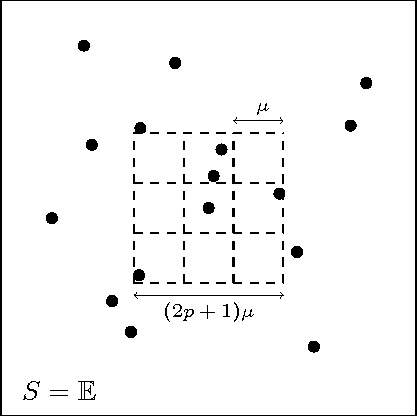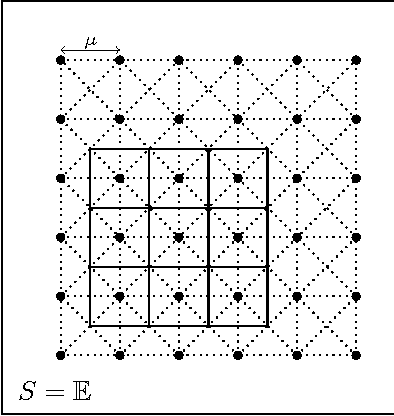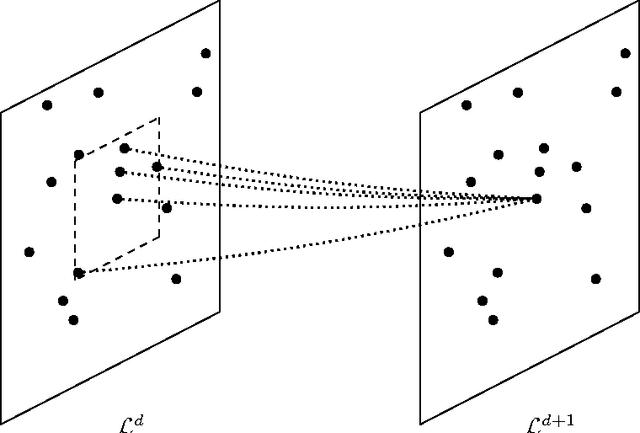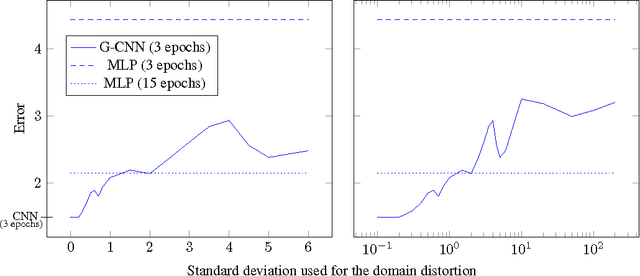Grégoire Mercier
Generalizing the Convolution Operator to extend CNNs to Irregular Domains
Oct 25, 2017



Abstract:Convolutional Neural Networks (CNNs) have become the state-of-the-art in supervised learning vision tasks. Their convolutional filters are of paramount importance for they allow to learn patterns while disregarding their locations in input images. When facing highly irregular domains, generalized convolutional operators based on an underlying graph structure have been proposed. However, these operators do not exactly match standard ones on grid graphs, and introduce unwanted additional invariance (e.g. with regards to rotations). We propose a novel approach to generalize CNNs to irregular domains using weight sharing and graph-based operators. Using experiments, we show that these models resemble CNNs on regular domains and offer better performance than multilayer perceptrons on distorded ones.
Texture and Color-based Image Retrieval Using the Local Extrema Features and Riemannian Distance
Mar 03, 2017



Abstract:A novel efficient method for content-based image retrieval (CBIR) is developed in this paper using both texture and color features. Our motivation is to represent and characterize an input image by a set of local descriptors extracted at characteristic points (i.e. keypoints) within the image. Then, dissimilarity measure between images is calculated based on the geometric distance between the topological feature spaces (i.e. manifolds) formed by the sets of local descriptors generated from these images. In this work, we propose to extract and use the local extrema pixels as our feature points. Then, the so-called local extrema-based descriptor (LED) is generated for each keypoint by integrating all color, spatial as well as gradient information captured by a set of its nearest local extrema. Hence, each image is encoded by a LED feature point cloud and riemannian distances between these point clouds enable us to tackle CBIR. Experiments performed on Vistex, Stex and colored Brodatz texture databases using the proposed approach provide very efficient and competitive results compared to the state-of-the-art methods.
 Add to Chrome
Add to Chrome Add to Firefox
Add to Firefox Add to Edge
Add to Edge